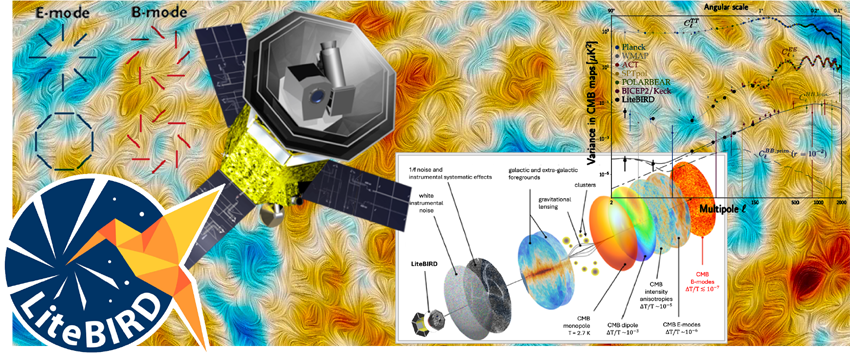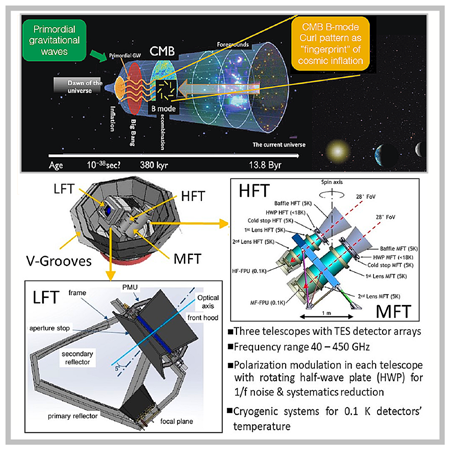
LiteBIRD: the CMB space mission studying the cosmic inflation
Lite (Light) satellite for the studies of B-mode polarization and Inflation from cosmic background Radiation Detection (LiteBIRD), is a large-class space mission, dedicated to the polarization measure of the cosmic microwave background (CMB) radiation , of the Japan Space Agency (JAXA). It was approved in May 2019, with launch scheduled for 2033. The LiteBIRD probe will orbit the Lagrangian L2 point of the Sun-Earth system, and will observe the polarization of cosmic microwave background radiation in 15 frequency bands, between 34 and 448 GHz, with a sensitivity of 2.2 micro-Kelvin per arcminute, and an angular resolution on the order of 0.5 degrees at 100 GHz.
The main goal of this space mission is the detection of the spectrum of the CMB B-mode polarization, that would provide indirect evidence of the existence of primordial gravitational waves produced during the cosmic phase of inflation.
In addition to providing crucial evidence in support of the theorized cosmic inflation, the mission will enable the study of the quantum nature of gravity, cosmic neutrino physics and Galactic astrophysics. LiteBIRD consists of three microwave telescopes-Low, Mid and High Frequency Telescopes (LFT, MFT, HFT). MFT and HFT are developed in Europe, under the leadership of the French CNES, with major contribution to the hardware given by Italy. In Italy, ASI, INFN, INAF, several universities and SISSA in Trieste are involved. INFN contributes in readout electronics for the cryogenic detectors of the three telescopes, in calibration and data analysis pipeline development, and end-to-end simulations, with direct participation of local INFN Roma Tor Vergata in all of them.
The team of the INFN local section is involved in developing advanced methods and tools for separation of the different microwaves emission components, and mitigation of the contaminating polarized emission from our Galaxy. Main activities also include algorithms designed to generate celestial maps of the CMB and the contribute to build a data simulation platform. Simulations that includes emission by astrophysical sources, instrumental systematic effects, gravitational lensing effects, understanding their impact on cosmological model constraints. The local team is also actively involved in studying synergies between LiteBIRD observations, and observations of other cosmological surveys, in particular those dedicated to analysis of the large-scale structure of the universe.
























































































